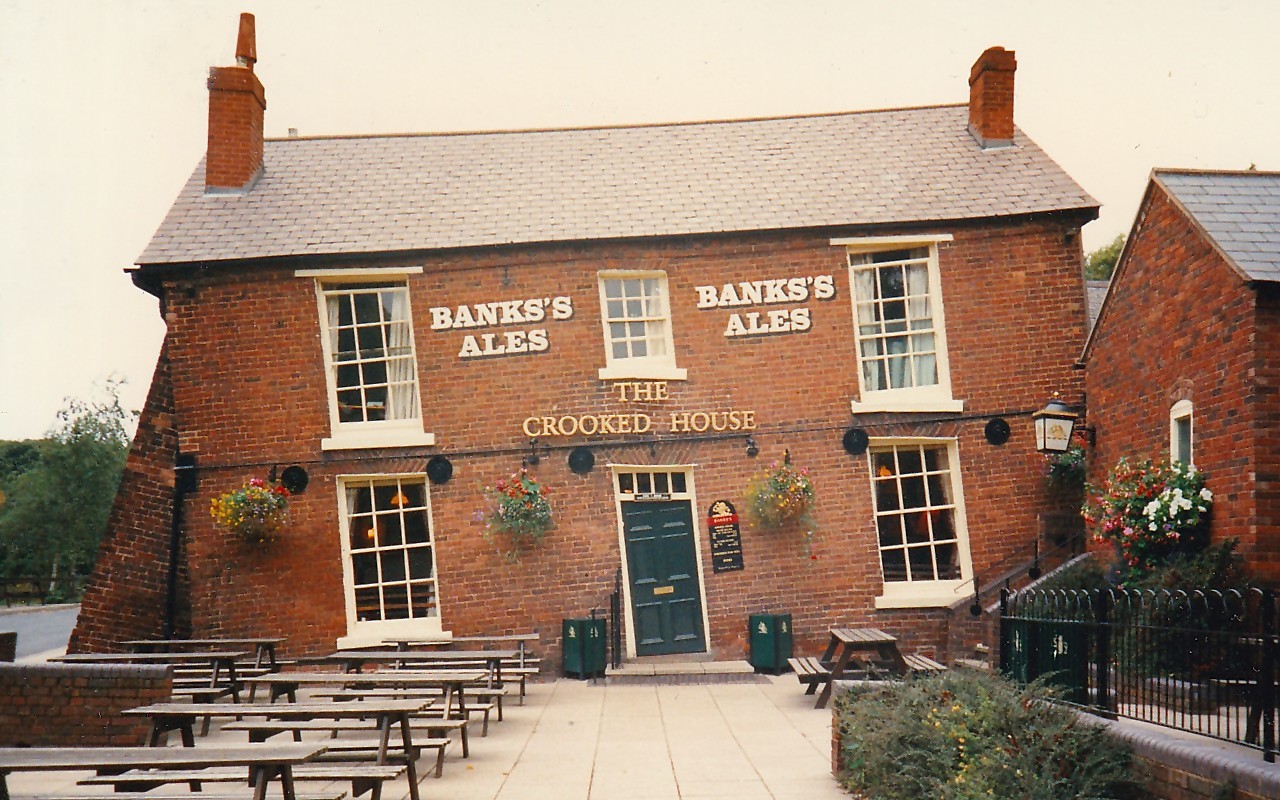A little history
The Crooked House was located in Himley, in the Black Country region of England. It was a historic and iconic pub in the Black Country, known for its distinctive slanted, “crooked” architecture that was caused by subsidence from nearby coal mining. I can remember visiting some years ago and appreciating the pub’s quirks, including being shown that a marble could appear to roll uphill! The pub was well-loved and deeply connected to the history, identity, and shared experiences of the community.
The pub had a long history dating back to 1765 when it started as a farmhouse before becoming a public house around 1830, known as the Glynne Arms. It was a beloved local landmark and gathering place for the community. Historic pubs like the Crooked House are often the settings for cherished memories and traditions passed down through generations. They are places where communities gather, socialise, and feel a sense of belonging. However, this importance changes over time and viability becomes an issue, and therefore changes of use are made possible.
It is worth conserving the character of historic pubs like the Crooked House and the settings hold cherished memories and traditions passed down through generations. These historic pubs contribute to the distinctive character and “sense of place” of a local area. The Crooked House, with its unique slanted architecture, gave the village of Himley and the broader Dudley area a special identity and sense of pride.
The fire
In August 2023 the Crooked House was destroyed in a suspected arson fire, and the remaining structure was quickly demolished, sparking outrage and demands for answers from the local community. The loss of the Crooked House was seen as a tragedy that represented the ongoing threat to historic pubs and buildings in the UK, with calls for stronger legal protections to prevent such demolitions.
So what?
The heritage profession has extensively debated the challenges facing historic buildings and sites, including balancing preservation with modern needs, using heritage to inspire the future, and adopting a more people-focused approach to heritage. The debate centres around finding the right balance between respecting heritage and enabling economic development, as well as recognising that heritage is about more than just physical buildings – it’s also about the stories, culture, and connections to local communities.
What are heritage pubs worth to the UK economy and other public benefits? Preservation of heritage pubs helps maintain local character and unique cultural identities, which can drive tourism and economic activity in communities – even when visits to individual pubs are low. There are mental health benefits associated with a sense of belonging and providing opportunities for social interaction and a sense of community. We need to utilise these buildings. Heritage pubs can function as informal community centres, hosting events, meetings, and other activities that benefit the public.
How do we manage heritage successfully?
Ultimately, heritage is worth preserving but how do we do so successfully? Suggestions include rebuilding the Crooked House in a sensitive, contextual manner, or using the incident as an opportunity to create a new heritage asset that can become beloved by the community.
Did you know The Crooked House pub is in the news again?
The comments on this LinkedIn post by West Midlands mayor Andy Street suggest a key part of the debate is between those who want to pour resources into maintaining the Crooked House versus those who argue the heritage of the West Midlands lies more in its people than its places. Heritage is about people: how they lived and worked in the past is told by the architecture and other cultural landscapes that result. The Crooked House was unique to this part of the country and that’s what made it special.
Birmingham Live have stated that “Now, a document submitted on behalf of the owners has disclosed their plan to rebuild the pub on other land under their ownership, coupled with further developments intended to ‘increase footfall’.” As has been argued by others, the setting is a key part of its meaning due to subsidence and mining histories. In response, a spokesperson stated “Requiring a re-build in the same location, whilst reflective of popular opinion, will not change the fact that the building in that location is not viable as a public house.”
Expert opinion
In response, experience shows that relocating historic buildings is sometimes necessary as a last resort to save them from demolition or destruction, but it is a highly complex and debated practice within the heritage preservation field. In my opinion, this decision should not be forced by such circumstances but based on:
- determining the building’s historical significance
- assessing whether the move will damage its value
- planning a new purpose for the building
- factoring in all associated costs, and
- finding community partners to support the effort.
Moving a historic building is sometimes possible, but this needs to be done in a way that maintains the building’s historic integrity.


No Responses